The European banking sector operates within a comprehensive regulatory framework designed to promote stability, transparency, and trust in financial markets across the European Union (EU). Given the pivotal role banks play in the economy, ensuring their soundness and resilience is central to EU policy.
The Foundations: Who Regulates Banks in the EU?
Banking regulation within the EU involves multiple interconnected actors to ensure effective oversight at both supranational and national levels.
At the heart of supervisory authority in the Eurozone is the European Central Bank (ECB), which oversees the largest and most systemically important banks through the Single Supervisory Mechanism (SSM). Established after the 2008 financial crisis, the SSM empowers the ECB to directly supervise significant credit institutions to prevent systemic risks and maintain financial stability.
Complementing the ECB, the European Banking Authority (EBA) develops a single rulebook of regulatory standards applicable to all EU banks. The EBA formulates guidelines, coordinates stress tests, and advances supervisory convergence, ensuring that banks across member states adhere to harmonized expectations.
At the national level, National Competent Authorities (NCAs) such as Germany’s BaFin or France’s Banque de France regulate smaller banks within their territories. NCAs cooperate closely with the ECB and EBA to maintain consistency, particularly for institutions outside the ECB’s direct remit.
Key EU Banking Regulations: Pillars of Prudential Supervision
Several crucial legislative instruments set out the prudential rules that banks must follow. Among the most important are the Capital Requirements Regulation (CRR) and the Capital Requirements Directive (CRD IV and CRD V).
These regulations establish comprehensive standards on capital adequacy, risk management, and governance. They require banks to hold sufficient capital buffers calculated using risk-weighted assets (RWA), reflecting the credit, market, and operational risks the institutions face.
CRR/CRD IV/V also mandate strong internal governance, including policies for credit risk models, stress testing, and oversight responsibilities of board members.
Through these standards, EU banking rules aim to enhance resilience, reducing the likelihood of bank failures that could destabilize markets and economies.
The Role of the European Banking Authority (EBA)
The EBA is a linchpin institution advancing regulatory harmonization and sound banking practices. It issues detailed guidelines that cover areas such as internal governance, risk management frameworks, model validation, and outsourcing arrangements.
The EBA guidelines require banks to establish robust control environments for managing Model Risk Management (MRM), ensuring the reliability and accuracy of internal models used for calculating capital requirements.
By conducting periodic stress tests, the EBA evaluates banks’ ability to withstand economic shocks, fostering transparency and market confidence.
Supervisory Role of the European Central Bank and the SSM
The ECB, under the Single Supervisory Mechanism, oversees the most significant credit institutions in the Eurozone, reflecting their systemic importance.
The ECB applies the Targeted Review of Internal Models (TRIM) guide to standardize and improve the accuracy of banks’ risk models. TRIM emphasizes governance, validation, and continuous monitoring to ensure models realistically reflect risk exposures.
The supervisory process includes on-site inspections, off-site monitoring, and dialoguing with bank management. The ECB’s active role prevents regulatory arbitrage and promotes a level playing field in the banking sector.
The Supervisory Review and Evaluation Process (SREP)
An essential instrument of ongoing supervision is the Supervisory Review and Evaluation Process (SREP), jointly conducted by the ECB and NCAs. SREP assesses banks’ overall risk profiles, governance, and capital adequacy beyond minimum regulatory thresholds.
During SREP, banks undergo rigorous evaluation of credit risk, operational risk, model risk, and liquidity management. The process determines whether banks need to hold additional capital or adjust business practices to mitigate identified risks.
SREP enhances the proactive identification of vulnerabilities, strengthening the stability of individual banks and the financial system.
Impact of International Financial Reporting Standards (IFRS 9)
Accounting standards also influence banking regulation, particularly IFRS 9, which governs the recognition and measurement of financial instruments, including expected credit losses.
IFRS 9 requires forward-looking credit risk modeling, demanding that banks accurately estimate potential loan losses and report these promptly. As a result, internal models for credit risk play a dual role in financial reporting and regulatory capital calculations.
Robust governance and validation of these models align accounting with prudential regulation, improving transparency and ensuring a true reflection of banks’ financial health.
Basel Committee Principles: Shaping Global and EU Banking Standards
The Basel Committee on Banking Supervision (BCBS) develops principles that underpin banking regulation worldwide. The EU incorporates these standards extensively, including Basel III frameworks that focus on capital adequacy, leverage ratios, and liquidity coverage.
Key Basel principles relevant to EU banks cover the sound management of operational risk and effective aggregation and reporting of risk data. These principles aim to strengthen risk control and governance.
By adopting Basel standards, the EU aligns its banking regulation with international best practices, fostering global financial resilience.
European Securities and Markets Authority (ESMA) and Investment Firms
While the ECB and EBA oversee banks, ESMA regulates entities active in securities markets, such as asset managers and investment firms.
ESMA’s guidelines address risk management, internal controls, and transparency to maintain market integrity, complementing banking supervision especially for firms with hybrid activities.
Effective supervision of securities entities supports overall financial stability by mitigating operational and model risks in EU capital markets.
Pillar 2 and Capital Adequacy Assessments
Under Basel accords, the Pillar 2 framework requires banks to conduct the Internal Capital Adequacy Assessment Process (ICAAP). This process evaluates institution-specific risks, including model risk, reflecting unique business and operational characteristics.
Supervisors review ICAAP outcomes during SREP and may impose additional capital buffers if risks warrant.
Pillar 2 fosters a culture of proactive risk management and capital planning beyond minimum regulatory demands.
Governance and Risk Management Frameworks in EU Banks
Comprehensive governance and risk management systems are mandated by EU regulations. Banks must define clear policies covering model development, testing, validation, and ongoing monitoring.
Strong governance safeguards accuracy, reduces errors, and ensures compliance. Emphasizing model risk management (MRM) enhances the institution’s capacity to respond to changing risk environments.
Effective governance underpins sound decision-making, regulatory compliance, and market confidence.
The regulation of banks in the European Union is complex but highly coordinated, centered on ensuring financial stability, transparency, and consumer protection. At the core are the European Central Bank’s supervisory powers, supported by the European Banking Authority’s regulatory framework and national authorities’ local supervision.
A blend of robust capital requirements, comprehensive governance standards, and advanced risk management practices fortify the EU banking system. Continuous processes like SREP and stress testing assess banks’ resilience, while international standards provide consistent benchmarks.
For financial institutions, compliance with this framework is not just legal obligation but fundamental to sustaining trust in EU markets, fostering economic growth, and protecting citizens’ financial well-being in an interconnected global economy.







